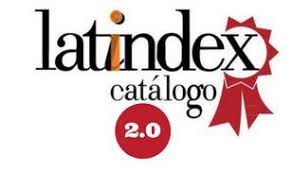Putting urban context in the debate. Bibliometric approaches from the meta-analysis of scientific literature
DOI:
https://doi.org/10.22320/07183607.2020.23.41.01Keywords:
urban context, bibliometric analysis, scientific production, urban studies, cityAbstract
Why is the definition of urban context essential, in a world of multiple, complementary and, sometimes, divergent meanings? This is the central question of the article. This work reviews the successive definitions of this concept, that emerge from the scientific databases of publications from areas such as architecture and urban studies, among others. It has been stated that the frequent use of this term has ended up confusing its potential. A methodology based on a bibliometric analysis is proposed to examine the conceptual presence of the context in research between 1977 and 2017. The results suggest that urban context has been used in scientific production to face the particular realities of each country, without reaching an agreement on its variables. In addition, it has been applied without defining these realities.
Downloads
References
place and social capital in the urban context. Transactions in GIS, 21(3), 503–520. DOI:
https://doi.org/10.1111/tgis.12282
Berger, PL. Luckmann, T. Zuleta, S. (1968). La construcción social de la realidad.
Madrid: Amorrortu Editores.
Bloomer, K., Moore, C., Yudell, R. y Yudell, B. (1977). Body, Memory, and Architecture.
New Haven: Yale University Press.
Cairney, P. y Weible, C. (2018). Las nuevas ciBencias de política pública: combinando la ciencia cognitiva de la decisión, las múltiples teorías del contexto y el análisis básico y aplicado. Ciencia Política, 13(26), 323–338. DOI: https://doi.org/10.15446/cp.v13n26.73461
Castell. M. (2009). Comunicación y poder. Madrid: Alianza editorial.
Ellegård, K. y Svedin, U. (2012). Torsten Hägerstrand’s time-geography as the cradle of the activity approach in transport geography. Journal of Transport Geography, (23), 17–25. DOI: https://doi.org/10.1016/j.jtrangeo.2012.03.023
García, C., Carrasco, J. y Rojas, C. (2014). El contexto urbano y las interacciones sociales: dualidad del espacio de actividades de sectores de ingresos altos y bajos en Concepción, Chile. EURE, 40(121), 75-99.
Garfield, E. (2004). HistCite. Bibliographic Analysis and Visualization Software. Recuperado de http://garfield.library.upenn.edu/histcomp/#Z
Grădinaru, I. A. (2013). Communication, Knowledge and Discourse. Remarks on Teun Van Dijk’s Sociocognitive Interpretation of Context. Argumentum: Journal the Seminar of Discursive Logic, Argumentation Theory & Rhetoric, 11(1), 119–125. Recuperado de http://search.ebscohost.com/login.aspx?direct=true&db=ufh&AN=86040523&lang=es&site=ehost-live
Gregory, D., Johnston, R., Pratt, G., Watts, M. y Whatmore, S. (2009).The dictionary of human geography. London: Wiley-Blackwell.
Hägerstrand, T. (1989) What about people in regional science? Papers of the Regional Science Association, 66(1), 7-21.
Jacobs, J. (2011). Muerte y Vida de las Grandes Ciudades. Madrid: Capitán Swing.
Komez-Daglioglu, E. (2016). The context Debate: An Archaeology. Architectural Theory Review, 20(2), 266-279. DOI:10.1080/13264826.2016.1170058
Lakoff G. y Johnsen M. (2003). Metaphors we live by. London: The university of Chicago press.
Lauria, D. (2013). Introducción: Tradición e innovación en la historia de la producción lexicográfica del español y del portugués en América del Sur. El diccionario como objeto de investigación: aportes desde distintas perspectivas teórico-metodológicas. Revista Argentina de Historiografía Lingüística, 5(2), 89–93. Recuperado de http://search.ebscohost.com/login.aspx?direct=true&db=asn&AN=95008009&lang=es&site=ehost-live
Lynch, K. (2004). La imagen de la ciudad. Barcelona: Gustavo Gili.
Rama, Á. (1984). La ciudad letrada. Hanover: Ediciones del Norte.
Schmidt di Friedberg, M. (2018). Geographies of Disorientation. Londres: Routledge.
Suzuki, E., Kashima, S., Kawachi, I. y Subramanian, S. V. (2012). Geographic inequalities in all-cause mortality in Japan: compositional or contextual? Plos One, 7(6), e39876. Recuperado de https://doi.org/10.1371/journal.pone.0039876
Thrift, N. (2008). Non-representational theory space, politics, affect. Londres: Routledge.
Van Dijk, T. (2016). Sociedad y discurso. Cómo influyen los contextos sociales sobre el texto y la conversación. Barcelona: Editorial Gedisa.
Wulff, E. (2007). El uso del software HistCite para identificar artículos significativos en búsquedas por materias en la Web of Science. Documentación de las Ciencias de la Información, (30), 45-64.
Published
How to Cite
Issue
Section
License
The content of articles which are published in each edition of Habitat Sustentable, is the exclusive responsibility of the author(s) and does not necessarily represent the thinking or compromise the opinion of University of the Bio-Bio.
The author(s) conserve their copyright and guarantee to the journal, the right of first publication of their work. This will simultaneously be subject to the Creative Commons Recognition License CC BY-SA, which allows others to share-copy, transform or create new materials from this work for non-commercial purposes, as long as they recognize authorship and the first publication in this journal, and its new creations are under a license with the same terms.![]()























